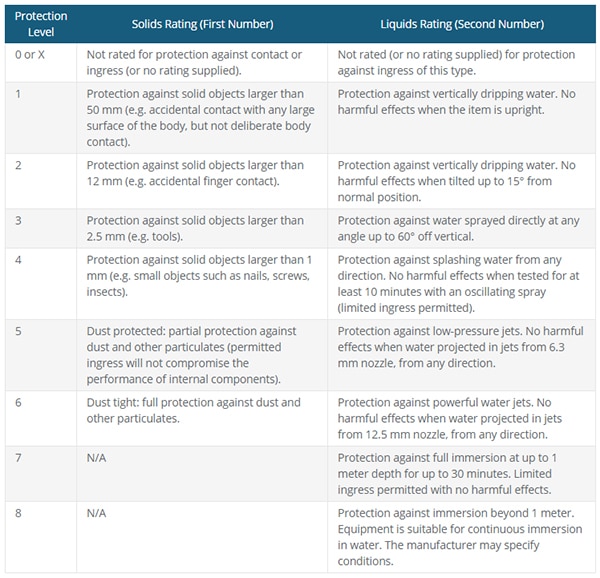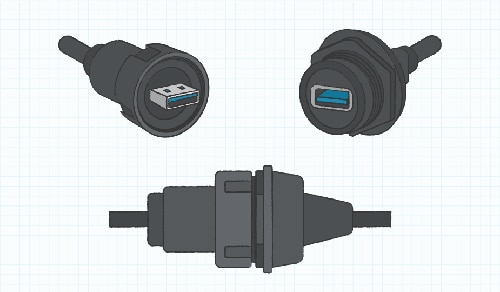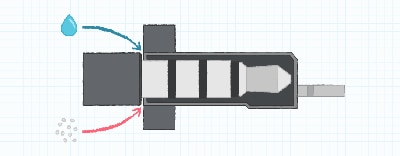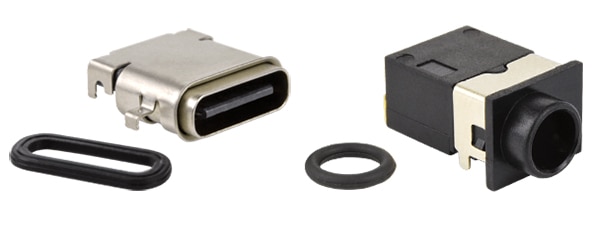An Overview of IP Ratings and Waterproof Connectors
2020-01-28
With the continued rise of portable and wearable electronics, there’s never been a greater need for everyday devices to tolerate exposure to dust and moisture. End-users expect products to survive a plunge into dirt or an accidental drop into water. Ruggedized performance is also essential in other IoT applications, particularly those intended for outdoor use or industrial environments. However, achieving this level of protection against moisture, dust, and other particulates needs to be addressed at the component level—and designed in early on—so as to not compromise reliability.
Connectors, a common component found in virtually every application, represent a potential entry point for these hazards to negatively impact the operation of an overall system. While IP rated connectors, components, and applications are growing in popularity and understanding, what are the various IP rating classifications and what design considerations need to be examined when selecting an IP rated connector?
IP ratings – the basics
Ingress Protection (IP) ratings are defined in the IEC 60529 standard using a standardized scale where the IP prefix is followed by two numbers: the first number representing protection against solids and the second number representing protection against liquids. There are also national or regional equivalents of the standard such as ANSI 60529 (United States) and EN 60529 (Europe).
 Figure 1: IP rating code structure (Image source: Same Sky)
Figure 1: IP rating code structure (Image source: Same Sky)
The numbers in the IP rating code are further defined in the table below (Figure 2). For instance, an IP56 rating means that the part is dust protected, while offering protection against powerful water jets.
 Figure 2: IP rating classifications (Image source: Same Sky)
Figure 2: IP rating classifications (Image source: Same Sky)
IP rated connector selection
Exposed external connectors are a common entry point for water and dust to enter a device. Determining an application’s intended use at an early stage is vitally important, so that exposed connectors are selected with an IP rating that will meet a system’s minimum requirements.
The most prevalent need for IP rated connectors can be found on a device with external ports such as an audio, USB, or DC power jack. A proper IP rating in this case will protect any internal circuitry from unforeseen water or dust ingress when no plug or external equipment is connected. In other instances, such as industrial cable-to-cable connections, a connector and plug combination that are fully-sealed when mated may be required. This fully-sealed connection can prevent dust and moisture from disrupting signals or damaging components exposed to high-pressure water or even full immersion when in operation.
 Figure 3: Plug and connector cable with locking and sealing interface (Image source: Same Sky)
Figure 3: Plug and connector cable with locking and sealing interface (Image source: Same Sky)
However, it is important to clarify that plugs and connectors with individual IP ratings do not automatically create an IP rated connection. Unless a design integrates an additional sealing mechanism like the screw terminal interface in Figure 3, they are still susceptible to dust and moisture ingress at the connection interface (Figure 4). If the interface was not properly sealed, it could disrupt signals or cause damage to internal circuitry.
 Figure 4: A typical connection is still susceptible to dust and moisture (Image source: Same Sky)
Figure 4: A typical connection is still susceptible to dust and moisture (Image source: Same Sky)
Conclusion
As portable devices grow in popularity, so does the need for more rugged components. Same Sky offers a range of IP67 rated connectors including USB receptacles, 3.5 mm audio jacks, and DC power jacks to give designers additional flexibility in rugged applications. Implementing a custom-shaped gasket or O-ring to provide effective sealing, these connectors achieve dust tight protection and full immersion up to 1 meter in an unconnected state.
 Figure 5: Same Sky UJ31-CH-3-MSMT-TR-67 USB connector and PJ-001AH-67 DC power jack (Image source: Same Sky)
Figure 5: Same Sky UJ31-CH-3-MSMT-TR-67 USB connector and PJ-001AH-67 DC power jack (Image source: Same Sky)
Disclaimer: The opinions, beliefs, and viewpoints expressed by the various authors and/or forum participants on this website do not necessarily reflect the opinions, beliefs, and viewpoints of DigiKey or official policies of DigiKey.








